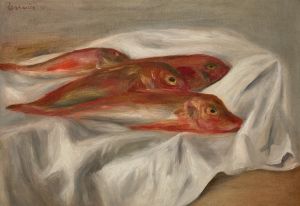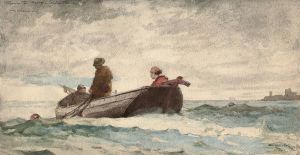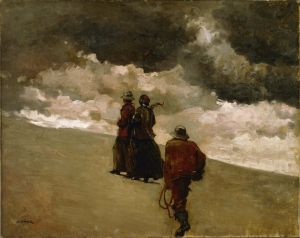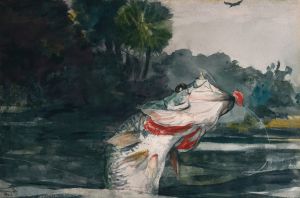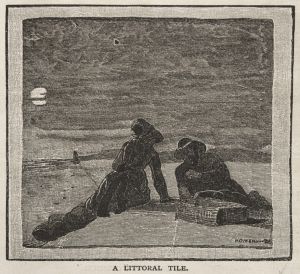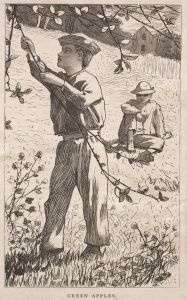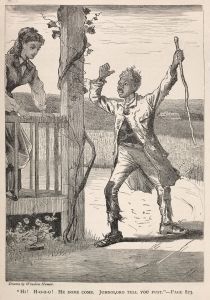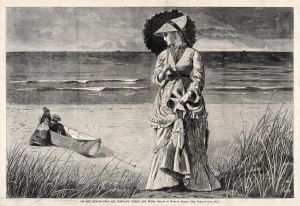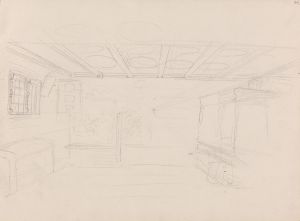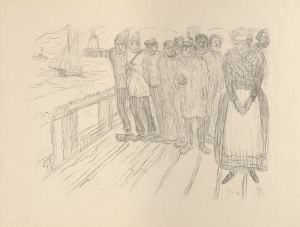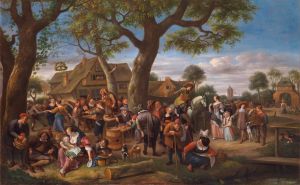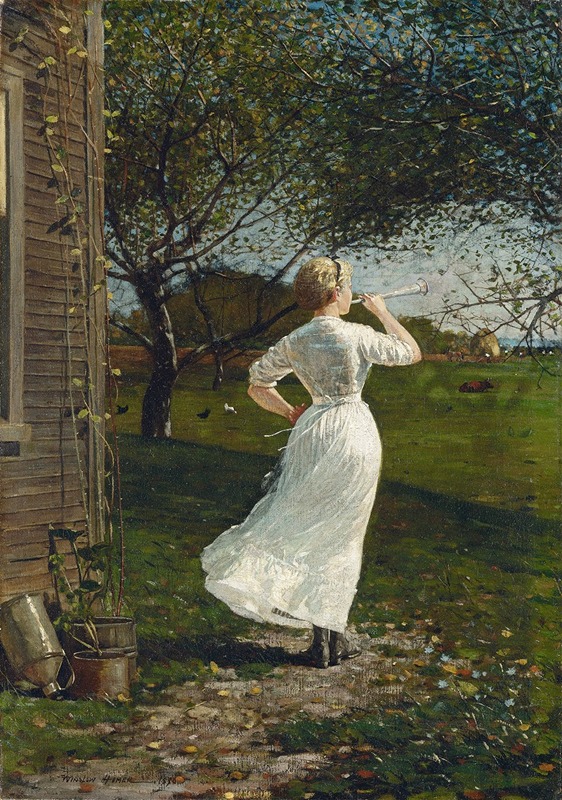
The Dinner Horn
A hand-painted replica of Winslow Homer’s masterpiece The Dinner Horn, meticulously crafted by professional artists to capture the true essence of the original. Each piece is created with museum-quality canvas and rare mineral pigments, carefully painted by experienced artists with delicate brushstrokes and rich, layered colors to perfectly recreate the texture of the original artwork. Unlike machine-printed reproductions, this hand-painted version brings the painting to life, infused with the artist’s emotions and skill in every stroke. Whether for personal collection or home decoration, it instantly elevates the artistic atmosphere of any space.
"The Dinner Horn" is a painting by the renowned American artist Winslow Homer, created in 1870. Homer is celebrated for his contributions to American art, particularly his realistic and vivid depictions of everyday life and landscapes. This particular work exemplifies his skill in capturing the essence of rural American life during the 19th century.
The painting portrays a young woman standing in a field, blowing a horn to call workers in from the fields for dinner. This scene is set against a backdrop of a vast, open sky, which is a common feature in Homer's work, emphasizing the expansive and often idyllic nature of rural America. The composition of the painting is simple yet effective, focusing on the solitary figure of the woman, who is dressed in typical rural attire of the period. Her posture and the action of blowing the horn suggest a moment frozen in time, capturing the daily rhythm of agricultural life.
Homer's use of color and light in "The Dinner Horn" is noteworthy. The painting is characterized by its warm, earthy tones, which convey the time of day and the season, likely late summer or early fall. The light in the painting is soft and diffused, suggesting either early morning or late afternoon, times when the sun casts long shadows and bathes the landscape in a gentle glow. This use of light not only enhances the realism of the scene but also imbues it with a sense of tranquility and nostalgia.
"The Dinner Horn" reflects Homer's interest in the theme of rural life, which he explored extensively throughout his career. After the Civil War, there was a growing interest in depicting the American countryside and its inhabitants, partly as a reaction to the rapid industrialization and urbanization of the country. Homer, along with other artists of the time, sought to capture the simplicity and authenticity of rural life, which many Americans viewed as a symbol of national identity and values.
This painting is also significant in the context of Homer's artistic development. During the 1870s, Homer was transitioning from his earlier work as an illustrator and war artist to becoming a full-time painter. His experiences during the Civil War had a profound impact on his work, leading him to focus on themes of everyday life and the resilience of the human spirit. "The Dinner Horn" is an example of this shift, showcasing his ability to convey complex emotions and narratives through seemingly simple scenes.
Today, "The Dinner Horn" is recognized as an important work in Winslow Homer's oeuvre, illustrating his mastery of composition, light, and subject matter. It remains a valuable piece for understanding the cultural and historical context of post-Civil War America and the role of art in reflecting and shaping national identity. The painting is held in high regard by art historians and continues to be studied for its artistic and historical significance.





